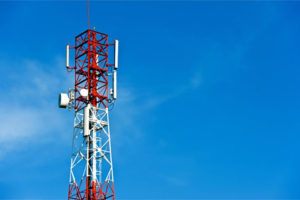-
-
Nashville, Tennessee
-

Over the past few months, you may have noticed Kingston yard signs advertising the following: “NO SMALL CELL ANTENNAS! OUR KIDS LIVE HERE! STOP 5G!”
That notion has no factual basis, and it prevents Kingston from moving forward with technology that can improve our daily lives.
Here’s what you need to know about 5G (fifth-generation mobile wireless) and why the anti-5G movement has become yet another scaremongering effort grounded in misinformation and fake news.
5G networks resemble 3G and 4G technologies in that they’re wireless networks that allow subscribers to access mobile Internet. The difference is that 5G uses higher frequencies than its precursors, allowing more devices to connect simultaneously at much faster speeds—more than 10 times faster than the current 4G networks.
The electromagnetic waves in 5G networks travel shorter distances, so more transmitters are required, and they must be installed closer to ground level.
Some worry that installing these transmitters closer to households will expose residents to harmful radio waves that may negatively impact their health, leading to the spread of anti-5G signs throughout Kingston. But humans are already exposed to a wide range of electromagnetic fields, from low-frequency non-ionizing radiation, such as radio waves and microwaves, to high-frequency ionizing radiation, such as ultraviolet, X-rays, and gamma rays.
In general, high-frequency ionizing rays can cause harm, as they can damage DNA and lead to cellular damage. This is the case with ultraviolet rays from the sun, hence the need for sunscreen in the summertime.
However, the electromagnetic fields (EMFs) from 5G networks operate through non-ionizing rays at a frequency much lower than visible light, with which we interact on a daily basis. Our exposure to radio waves may increase slightly with 5G compared to the exposure related to current 4G networks. However, the EMFs associated with 5G networks are still well below the harmful range of the electromagnetic spectrum.
According to the World Health Organization (WHO), “no adverse health effects have been established as being caused by mobile phone use,” while the International Agency for Research on Cancer (IARC) classifies radiofrequency electromagnetic fields as “possibly carcinogenic to humans”—in the same category as pickled vegetables and aloe vera. As Alex Hern from The Guardian notes, “5G is no more a weapon of war than a Wi-Fi router is a microwave oven—even though both those products use the same part of the spectrum, around the 2.4Ghz mark.”
KFL&A Public Health also answers frequently asked questions about the health effects of exposure to EMFs, which, according to scientific literature, are nonexistent. In spite of this, many anti-5G groups are using social media platforms such as Facebook to spread propaganda and organize events and protests to support their cause. These platforms often enable the sharing of misinformation—nowadays referred to as “fake news”—as it can be difficult to differentiate reliable sources from erroneous clickbait stories.
The creation of anti-5G Facebook groups further contributes to the propagation of this fake news, as they omit any corrective research and evidence. All it takes is a quick scroll through groups such as “5G – The Facts” or “Stop 5G Canada” to stumble upon countless alarmist claims and conspiracies.
One such group is the local Kingstonians for Safe Technology (K4ST), who are concerned about the health risks related to the increased frequencies of EMFs in 5G networks. More specifically, K4ST wrongfully claims that exposure to 5G “can cause cancer, neurological problems and other serious health effects.” Their website even has a whole section dedicated to electromagnetic hypersensitivity (EHS), which is associated with a vast assortment of self-reported symptoms, although the WHO explicitly states that “there is no scientific basis to link EHS symptoms to EMF exposure.”
However, K4ST is not the only one opposing the development of 5G networks. European telecommunication companies are also facing pushback as organized anti-5G protests have taken place across the continent, regardless of the lack of scientific evidence to back their claims. On a broader scale, the vast benefits of new 5G technology have been and continue to be overshadowed by false claims.
Some groups go as far to claim 5G is part of a mind control experiment, or that it will allow foreign governments to spy on our population. Some of these fears may even be related to the North American trend of scapegoating other countries, as Chinese company Huawei Technologies Inc. was selected to develop Canada’s 5G networks. This type of skepticism is reminiscent of other recent sensationalist groups, such as the “anti-vax” movement, which spreads misinformation about vaccines despite overwhelming scientific evidence that vaccines can help protect individuals and prevent disease outbreaks within vaccinated populations.
When we neglect to verify the credibility of sensational information, we risk losing out on technologies and scientific breakthroughs that would otherwise increase our quality of life. Overall, not only are fears over 5G networks unfounded, but their benefits are remarkable. 5G networks allow for obvious tech advancements such as faster downloads, browsing, and streaming. Even more than that, they will also enable the interconnectedness of technologies for greater accessibility, prevention methods, and much more. This includes technologies such as automated cars, forest fire detection tools, healthcare monitoring devices, and quality control systems. This concept is commonly dubbed the Internet of Things, or the ability to seamlessly connect our devices and information systems.
It’s easy to fall prey to the false rhetoric surrounding 5G, but when you look at the facts, this revolutionary new technology can only really make our lives better.
Geneviève Nolet is a fourth-year language, literature, and culture major.
Posted in EMF-home-inspection